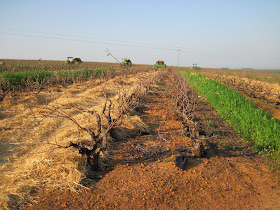I wasn't at the office last week, so I don't have anything interesting or something particular for last week. I will try to do some more writing by the end of this week. Pruning is basically coming to an end now. Here and there we still have some blocks to complete, but nothing big. Budding is picking up speed now. I see in the weather forecast that the next 15 days will also be moderately hot, so budding may even pick up more speed. A bit early though, but I read this morning that the whole world had the hottest July on record. No wonder the vineyards started budding so early!
Here are some random pics:
Coccinellidae (Lady Bird) mating. These guys play an integral role in the fight against the Mealy Bug.




















